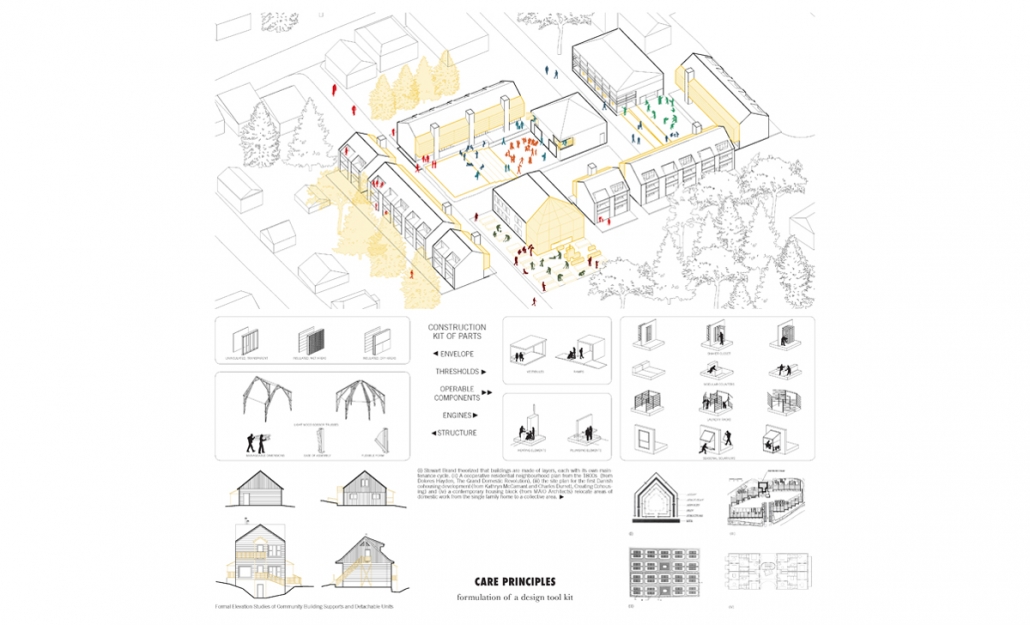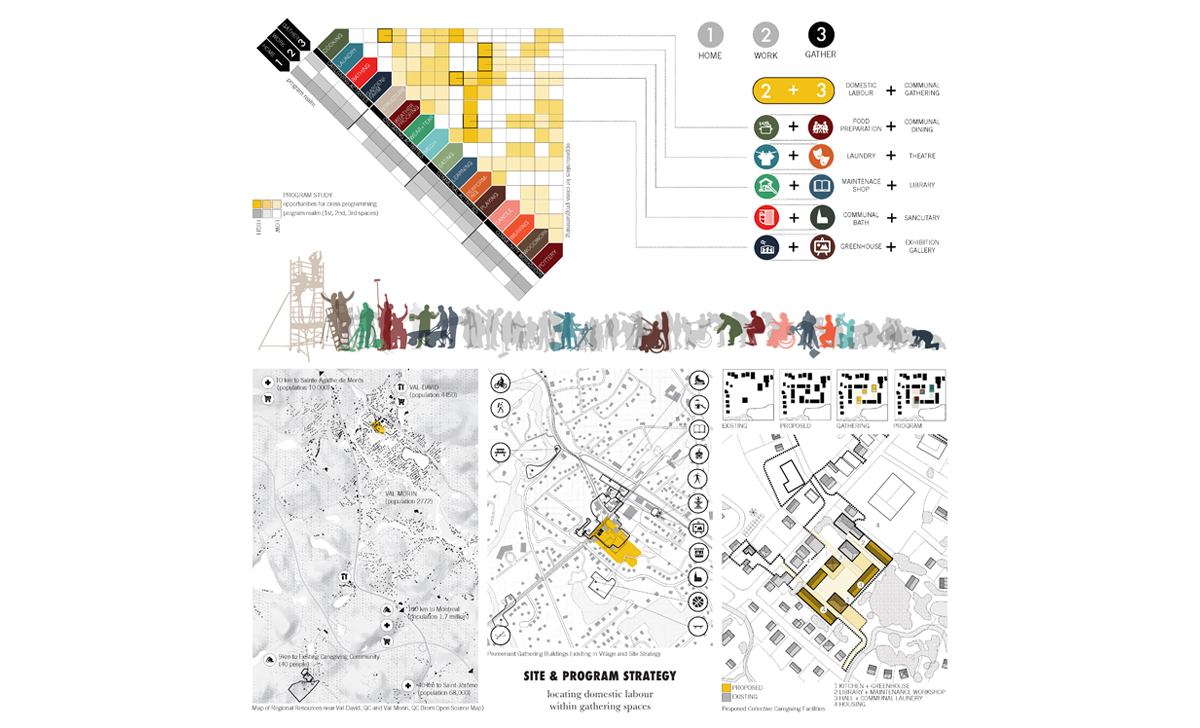2017-2018 Designing Healthy Places Competition
Winner: Housing for Aging
Jane Casson
Juror Comments
Caregiving is a signature challenge with an ageing population, but the way we deliver care will have to change due to demographic shifts. The students addressed these looming issues with a toolkit approach to resolve human-centered design through cooperative living arrangements. This project stood out for its research and consideration of maintenance, which is vital but frequently ignored.
Project Description
The labour of caregiving for people and caretaking for buildings is immense. 80% of the care for Canadians with long-term health, disability or aging needs are met through informal care and up to 80 % of the total cost of building goes to operation and maintenance. Both caregiving and caretaking are maintenance systems that would benefit from critical architectural judgement. The following positions caregiving and caretaking as central rituals of dwelling. It suggests that inhabitants gain agency in a building culture when a settlement reflects their cultural life and the building construction encourages self-reliance. Study of the cyclical nature of ritual and routine in intentional caregiving communities point to opportunities to marry instances of collective living with necessary maintenance activities.
Caregiving for adults who can no longer or never could live independently takes place in a variety of facility types: institutional, dispersed or clustered housing and village communities. Village communities disrupt the mainstream attitude towards the labour of care, by integrating the lives of caregivers with those in need of care.
This project develops on the village community typology, situating a collective caregiving facility on the interior of a neighborhood block. An interior courtyard is developed by inserting a second row of housing and buildings for collective domestic work and gathering behind the existing single-family homes. This strategy increases density and provides varying levels of privacy in amenities for both caregivers and care receivers.
Acknowledging that our social system of care as a technology to be improved through design opens the opportunity for architects to offer sustainable strategies to this problem. This requires the architect to cast themselves in role of caregiver/caretaker by accepting an ongoing relationship to their buildings and the communities they serve throughout the entire life-cycle of building with all of its maintenance cycles.

 Study Architecture
Study Architecture  ProPEL
ProPEL 

















